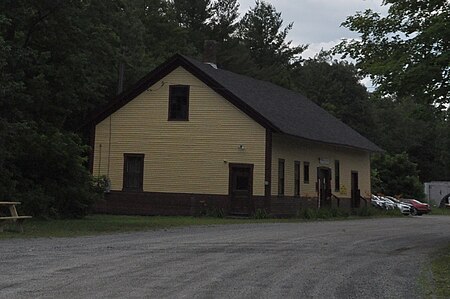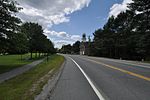Fairlee Railroad Depot
Buildings and structures completed in 1848Buildings and structures in Fairlee, VermontCommercial buildings on the National Register of Historic Places in VermontNational Register of Historic Places in Orange County, VermontTransportation buildings and structures in Orange County, Vermont

The Fairlee Railroad Depot is a historic railroad station at 320 United States Route 5 in the village center of Fairlee, Vermont. Built in 1848 and used in active service until 1972, it is one of the few surviving first-generation railroad station buildings in the state. Now used as a retail space, it was listed on the National Register of Historic Places in 1998.
Excerpt from the Wikipedia article Fairlee Railroad Depot (License: CC BY-SA 3.0, Authors, Images).Fairlee Railroad Depot
U.S. Route 5 North,
Geographical coordinates (GPS) Address Nearby Places Show on map
Geographical coordinates (GPS)
| Latitude | Longitude |
|---|---|
| N 43.906388888889 ° | E -72.144444444444 ° |
Address
U.S. Route 5 North
03777
Vermont, United States
Open on Google Maps








